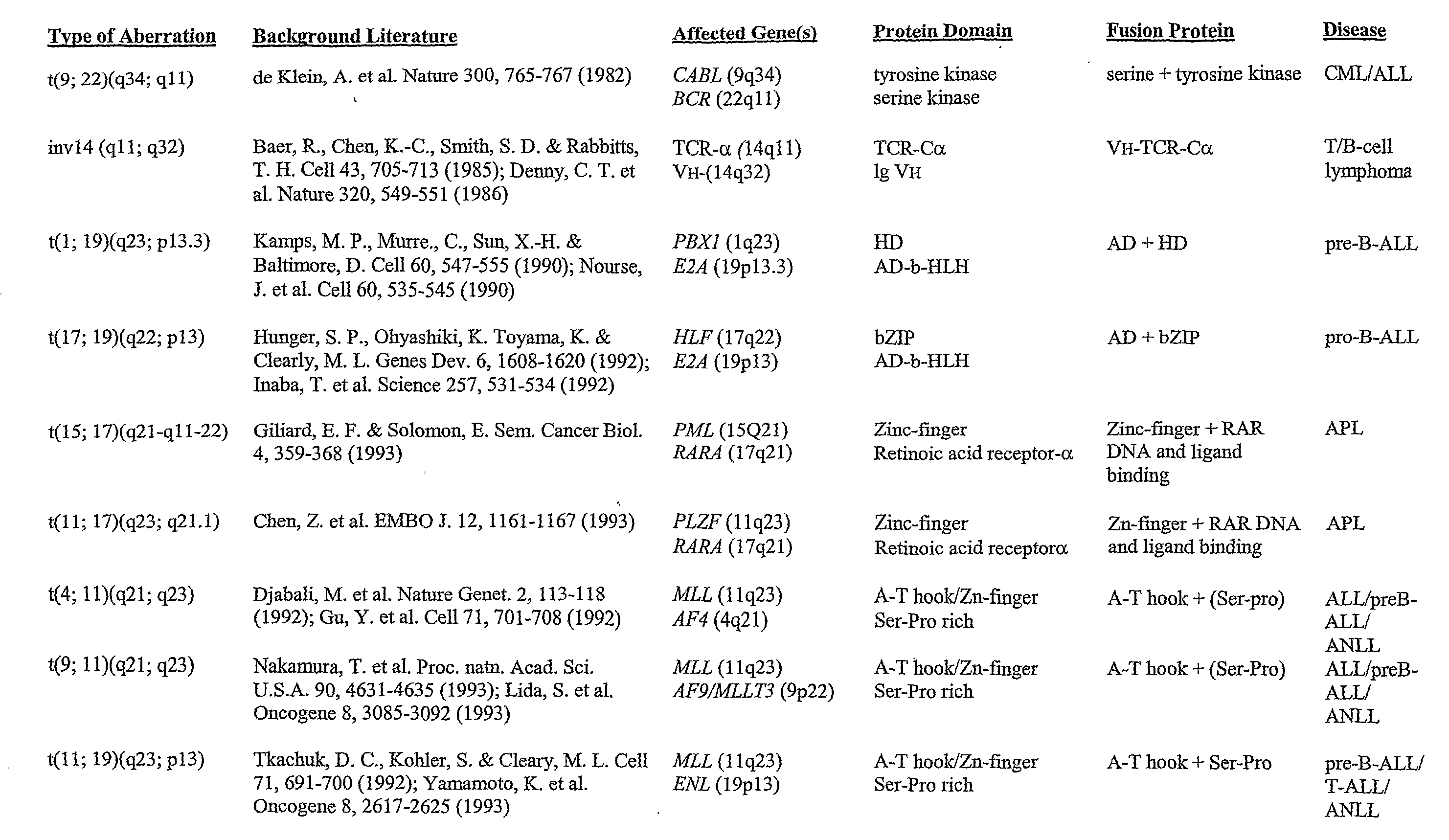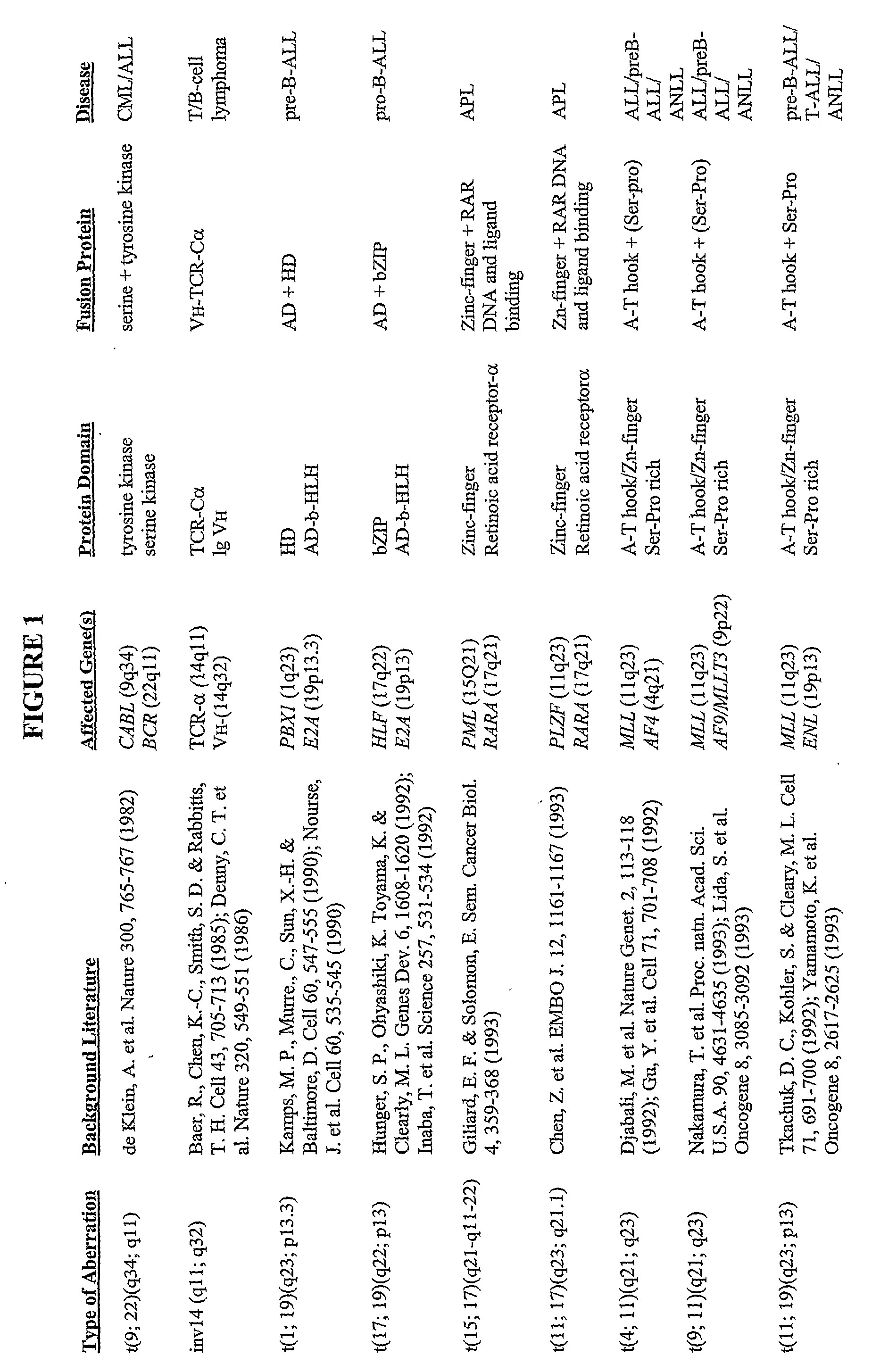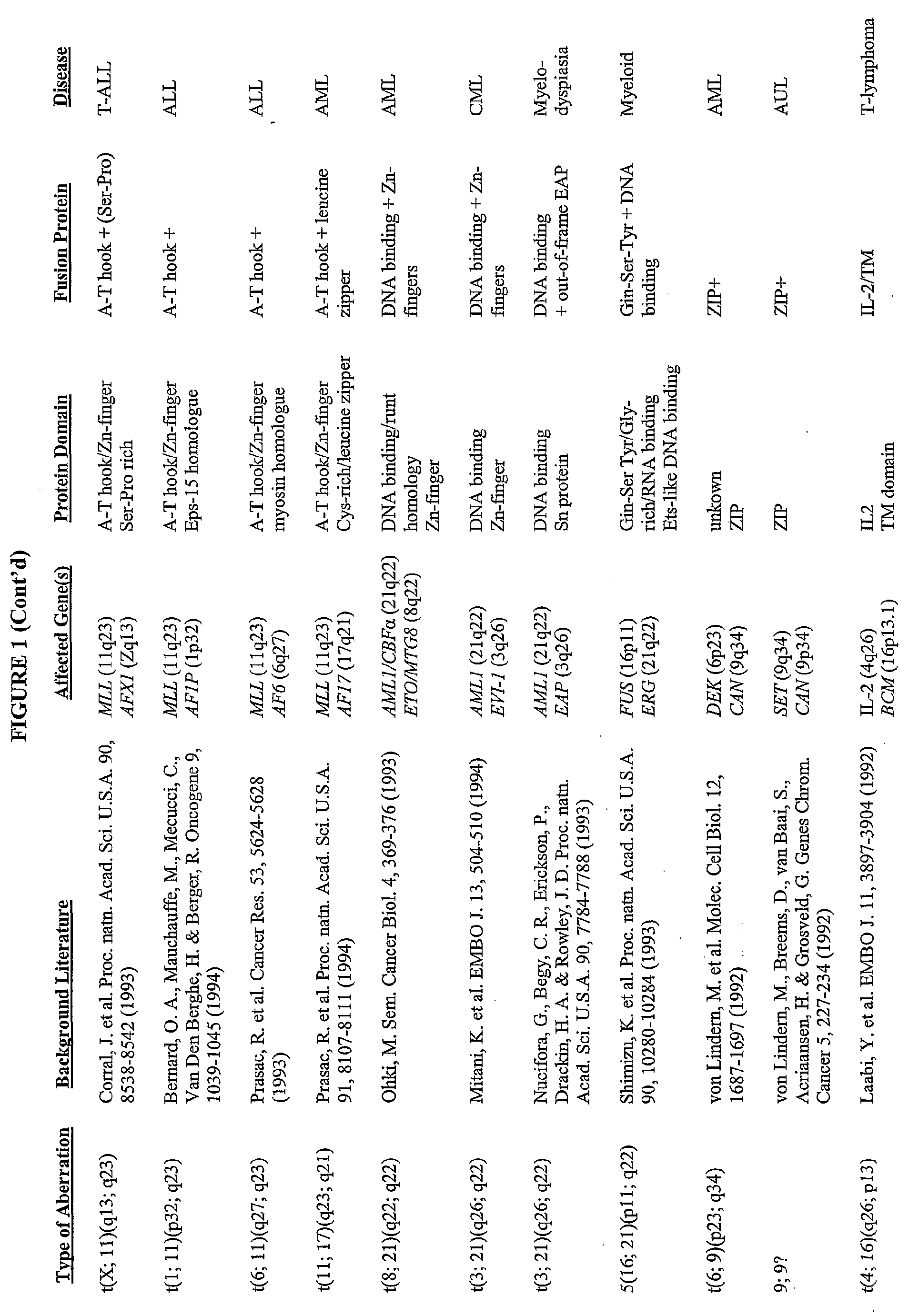Methods for treating genetically-defined proliferative disorders with HSP90 inhibitors
a technology of hsp90 inhibitors and proliferative disorders, applied in the direction of biocide, heterocyclic compound active ingredients, drug compositions, etc., can solve the problems of ineffective or less effective against normal cells
- Summary
- Abstract
- Description
- Claims
- Application Information
AI Technical Summary
Benefits of technology
Problems solved by technology
Method used
Image
Examples
example 1
Cytotoxic Activity of 17AAG on K562 Versus a Normal Cell Type
[0390] Grosveld et al., Mol Cell Biol 6(2):607-16 (1986) showed that the chronic myelocytic cell line K562 produces a chimeric bcr / c-abl transcript, making it a suitable model system to demonstrate the methods of the invention. The cell line is widely available, e.g., from American Type Culture Collection (“ATCC”; Manassas, Va., USA; cat# CCL-243) and can be propogated in a variety of media, e.g., ATCC's Iscove's modified Dulbecco's medium with 4 mM L-glutamine adjusted to contain 1.5 g / L sodium bicarbonate, 90%; fetal bovine serum, 10%; 37 C.
Experimental
[0391] To K562 cells (suspension grown in DMEM media supplemented w / 10% Fetal Bovine Serum (FBS) and 1 mM HEPES; subcultured biweekly at 100K cells / ml) in a 96 well plate (0.1 ml medium; 2000 cells per well) were added various concentrations of 17-AAG (CF7) and the effects measured over a period of 3-6 days using an MTS assay protocol similar to that offered by Promega ...
example 2
Preparation of Compound #208
[0396] 3,3′-diamino-N-methyldipropylamine (1.32 g, 9.1 mmol) was added dropwise to a solution of Geldanamycin (10 g, 17.83 mmol) in DMSO (200 ml) in a flame-dried flask under N2 and stirred at room temperature. The reaction mixture was diluted with water after 12 hours. A precipitate was formed and filtered to give the crude product. The crude product was chromatographed by silica chromatography (5% CH3OH / CH2Cl2) to afford the desired dimer as a purple solid (8.92 g, 7.2 mmol). Yield: 81%; mp 153 oC (dec.); 1H NMR (CDCl3) □0.95 (d, J=7 Hz, 6H, 2CH3), 1.0 (d, J=7 Hz, 6H, 2CH3), 1.69 (m, 4H, 2 CH2), 1.74 (m, 4H, 2CH2), 1.76 (s, 6H, 2 CH3), 1.83 (m, 2H, 2CH), 2.0 (s, 6H, 2CH3), 2.3 (s, 3H, N—CH3), 2.36 (dd, J=14 Hz, 2H, 2CH), 2.5 (m, 4H, 2CH2), 2.63 (d, 2H, 2CH), 2.75 (m, 2H, 2CH), 3.25 (s, 6H, 20CH3), 3.35 (s, 6H, 20CH3), 3.4 (m, 2H, 2CH), 3.50 (m, 4H, 2CH2), 3.68 (m, 2H, 2CH), 4.2 (Bs, 2H, OH), 4.3 (d, J=10 Hz, 2H, 2CH), 4.8 (Bs, 4H, 2NH2), 5.19 (s, 2H, 2...
example 3
Preparation of Compound #207
[0398] Compound #207 was prepared by the same method described in example 2 except that 1,4-bis(3-aminopropyl) piperazine was used instead of 3,3′-diamino-N-methyldipropylamine. The pure purple product was obtained after column chromatography (silica gel); yield: 90%; mp 162 oC; 1H NMR (CDCl3) □0.97 (d, J=6.6 Hz, 6H, 2CH3), 1.0 (d, J=6.6 Hz, 6H, 2CH3), 1.73 (m, 4H, 2 CH2), 1.78 (m, 4H, 2CH2), 1.80 (s, 6H, 2 CH3), 1.85 (m, 2H, 2CH), 2.0 (s, 6H, 2CH3), 2.4 (dd, J=11 Hz, 2H, 2CH), 2.55 (m, 8H, 4CH2), 2.67 (d, J=15 Hz, 2H, 2CH), 2.63 (t, J=10 HZ, 2H, 2CH), 2.78 (t, J=6.5 Hz, 4H, 2CH2), 3.26 (s, 6H, 20CH3), 3.38 (s, 6H, 20CH3), 3.4 (m, 2H, 2CH), 3.60 (m, 4H, 2CH2), 3.75 (m, 2H, 2CH), 4.6 (d, J=10 Hz, 2H, 2CH), 4.65 (Bs, 2H, 20H), 4.8 (Bs, 4H, 2NH2), 5.19 (s, 2H, CH), 5.83 (t, J=15 Hz, 2H, 2CH═), 5.89 (d, J=10 Hz, 2H, 2CH═), 6.58 (t, J=15 Hz, 2H, 2CH═), 6.94 (d, J=10 Hz, 2H, 2CH═), 7.24 (s, 2H, 2CH═), 7.60 (m, 2H, 2NH), 9.20 (s, 2H, 2NH); MS (m / z) 1258 (M+H); ...
PUM
| Property | Measurement | Unit |
|---|---|---|
| median survival time | aaaaa | aaaaa |
| median survival time | aaaaa | aaaaa |
| hematopoietic disorder | aaaaa | aaaaa |
Abstract
Description
Claims
Application Information
 Login to View More
Login to View More - R&D
- Intellectual Property
- Life Sciences
- Materials
- Tech Scout
- Unparalleled Data Quality
- Higher Quality Content
- 60% Fewer Hallucinations
Browse by: Latest US Patents, China's latest patents, Technical Efficacy Thesaurus, Application Domain, Technology Topic, Popular Technical Reports.
© 2025 PatSnap. All rights reserved.Legal|Privacy policy|Modern Slavery Act Transparency Statement|Sitemap|About US| Contact US: help@patsnap.com



